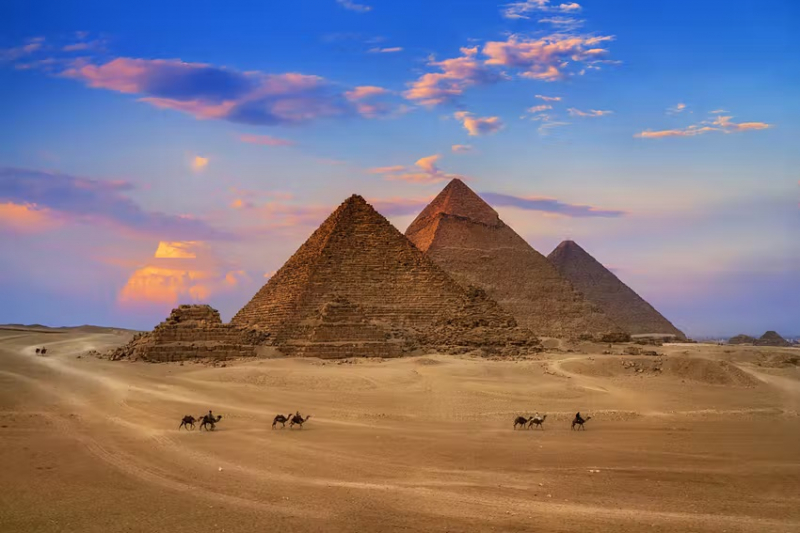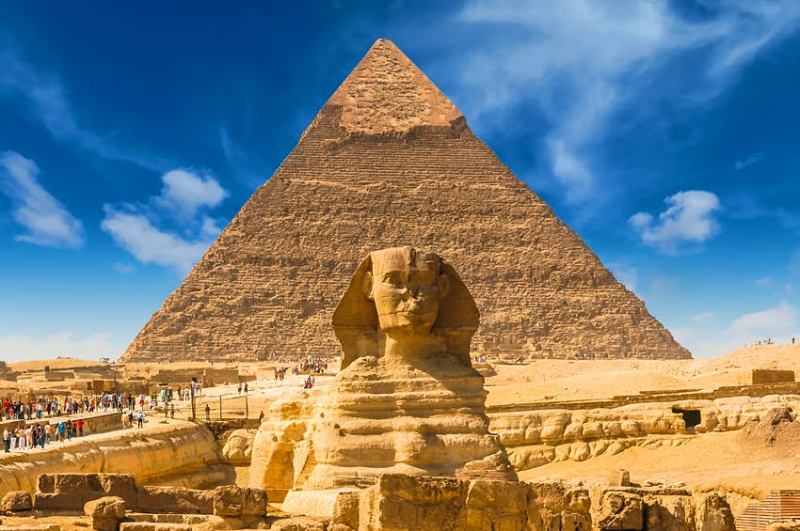Pyramids of Giza
The Giza Pyramids are three 4th-dynasty (c. 2575–c. 2465 BCE) pyramids built on a rocky plateau at Al-Jzah (Giza) in northern Egypt on the west bank of the Nile River. They were formerly considered one of the Seven Wonders of the World. The Pyramids of Giza, Saqqara, Dahshr, Ab Ruwaysh, and Abr, as well as the ancient ruins of Memphis, were recognized as a UNESCO World Heritage site in 1979.
The cubic capacity of this massive building is mind-boggling for visitors. The Great Pyramid is 2.3 million cubic meters in volume, excluding the rock foundation and interior chambers. The vertical height is 137.2 meters, while the base measurement is 227.5 meters. These tombs of the Pharaohs Cheops (Khufu), Chephren (Khafre), and Mycerinus (Menkaure), guarded by the enigmatic Sphinx, have awed travelers throughout the ages and are usually at the top of most visitors' lists of tourist attractions to see in Egypt, and are often the first sight they see after landing. These megalithic shrines to dead pharaohs, which lay on the edges of Cairo's sprawl, are still awe-inspiring sights and an obvious highlight of any Egypt vacation.












